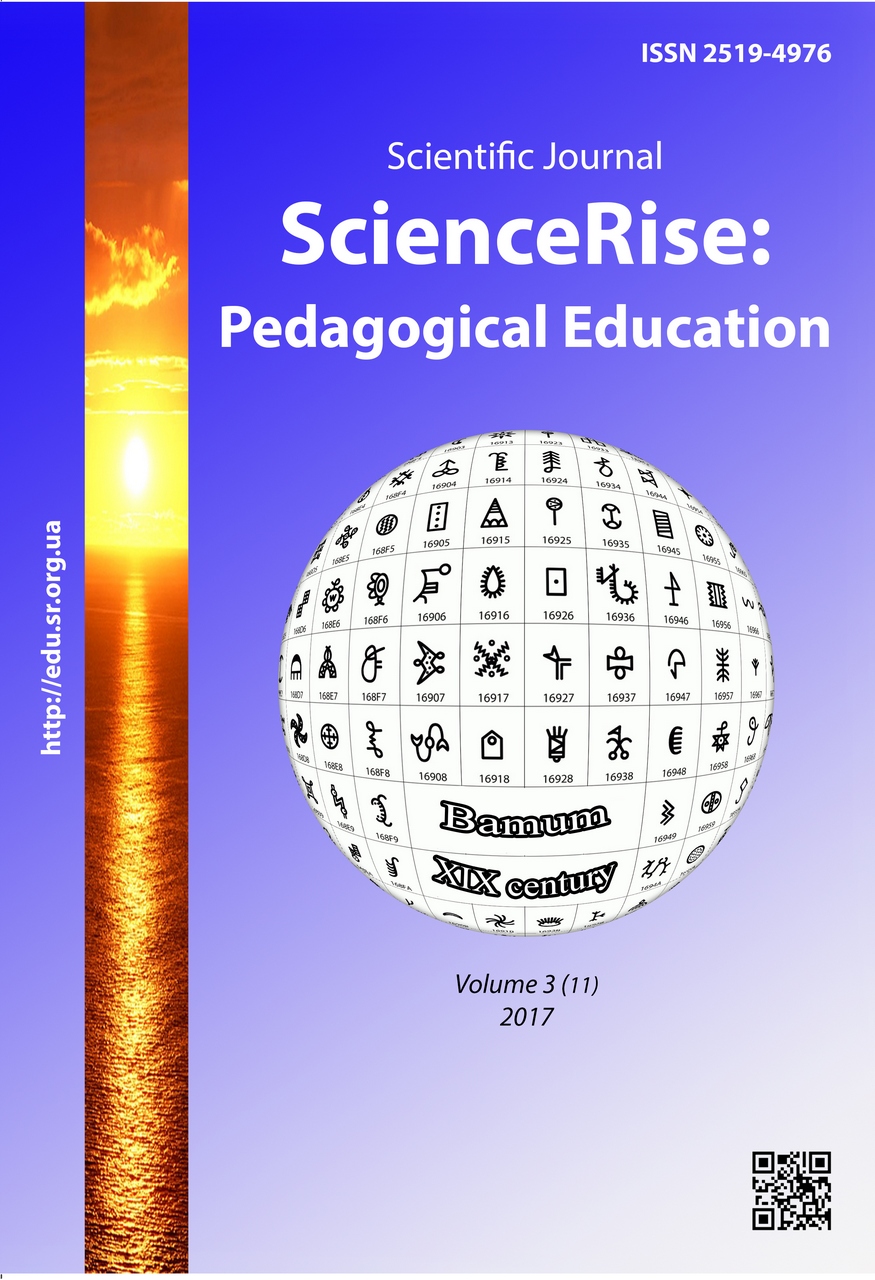Principles of visualization as a base of didactic design
DOI:
https://doi.org/10.15587/2519-4984.2017.97072Keywords:
clip thinking, visualization, didactic design, visualization principle, educational technotrendsAbstract
In the study are revealed the main aspects of didactic design taking into account thinking of the modern digital generation. The aim of the article is to discover the visualization principles of learning materials for their further use in learning process, namely: the principles of laconism, autonomy, stage principle, anchor principle, principles of structure, esthetics, easiness and availability, principle of influence on the maximal number of perception organs. The principles, offered by the author, take into account the features of modern digital generation that has “clip” thinking, perceives the world in fragments and is not able to perceive the large number of text information that generates the striving and necessity to get new portions of information continuously but without understanding its essence
References
- Amirov, A. F. (2008). Sovremennye orientiry sovremennogo obrazovaniya v Rossii. Vysshee obrazovanie v Rossii, 3, 22–26.
- Man'ko, N. N., Tkachenko, E. V., Shtejnberg, V. E. (2006). Didakticheskij dizajn – instrumental'nyj podhod. Obrazovanie i nauka, 1, 58–67. Available at: http://cyberleninka.ru/article/n/didakticheskiy-dizayn-instrumentalnyy-podhod
- Ius, D. V. (2013). Instrumental'naya didaktika i didakticheskij dizajn: teoriya, tekhnologiya i praktika mnogofunkcional'noj vizualizacii znanij. Moscow – Ufa: Izdatel'stvo BGPU imeni M. Akmully, 73–74. Available at: http://ost101.narod.ru/2013_Ufa_73_74.pdf
- Bilousova, L. I., Zhytyenyova, N. V. (2017). Functional approach to the use of technology of visualization for intensification of learning process. Informatsiini tekhnolohii i zasoby navchannia, 57 (1), 38–49. Available at: http://journal.iitta.gov.ua/index.php/itlt/article/view/1525
- Boiun, V. P. (2011). Intelektualne vybirkove spryiniattia vizualnoi informatsii. Informatsiini aspekty. Iskusstvennyi intellekt, 3, 16–24.
- Raputo, A. G. (2010). Vizualizaciya kak neot’emlemaya sostavlyayushchaya processa obucheniya prepodavatelej. Mezhdunarodnyj zhurnal ehksperimental'nogo obrazovaniya, 5, 138–141.
- Hryzun, L. E., Zhytienova, N. V., Mudrak, A. V. (2014). Elektronnyi dovidnyk z pytan zastosuvannia tekhnolohii vizualizatsii, realizovanyi zasobamy khmarnykh servisiv, u praktytsi navchannia. Problemy teorii i praktiki distancionnogo i ehlektronnogo obrazovaniya (PDEHO – 2014). Yalta: RVUZ KGU, 69–74.
- Manako, A. F., Sinica, K. M. (2012). KT v obuchenii: vzglyad skvoz' prizmu transformacij. Obrazovatel'nye tekhnologii i obshchestvo, 15 (3), 392–414. Available at: http://ifets.ieee.org/russian/depository/v15_i3/pdf/6.pdf
- Zhytyenyova, N. V. (2016). Technologies of visualization in modern educational trends. Vidkryte osvitnie e-seredovyshche suchasnoho universytetu, 2, 170–178. Available at: http://openedu.kubg.edu.ua/journal/index.php/openedu/article/view/43/83#.WNpjRNLygdU
- Gibson, Dzh.; Logvinenko, A. D. (Ed.) (1988). Ekologicheskij podhod k zritel'nomu vospriyatiyu. Moscow: Progress, 464.
- Alyaev, Yu. A., Garyaev, A. V., Kalinin, I. Yu. (2006). «Soyuzmul'tzadachnik. Zanimatel'naya fizika» dlya nachal'noj shkoly. Informatizaciya sel'skoj shkoly (Infosel'sh-2006). Moscow: OOO «Press-Attashe», 306–310. Available at: http://window.edu.ru/resource/008/56008/files/anapa2006.pdf
Downloads
Published
How to Cite
Issue
Section
License
Copyright (c) 2017 Natalya Zhytienova

This work is licensed under a Creative Commons Attribution 4.0 International License.
Our journal abides by the Creative Commons CC BY copyright rights and permissions for open access journals.
Authors, who are published in this journal, agree to the following conditions:
1. The authors reserve the right to authorship of the work and pass the first publication right of this work to the journal under the terms of a Creative Commons CC BY, which allows others to freely distribute the published research with the obligatory reference to the authors of the original work and the first publication of the work in this journal.
2. The authors have the right to conclude separate supplement agreements that relate to non-exclusive work distribution in the form in which it has been published by the journal (for example, to upload the work to the online storage of the journal or publish it as part of a monograph), provided that the reference to the first publication of the work in this journal is included.








